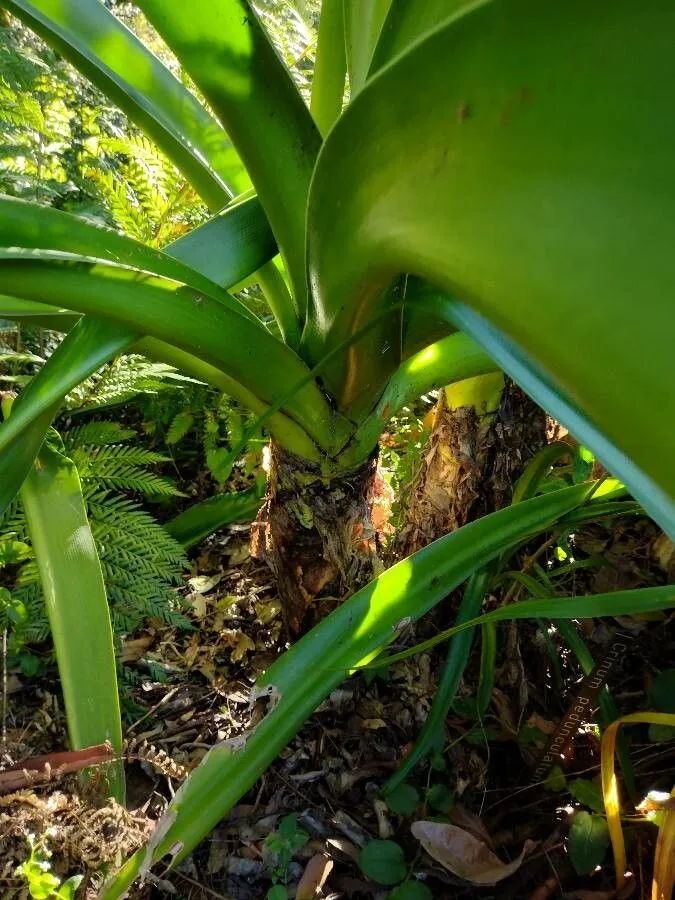
Author: L.
Bibliography: Sp. Pl.: 292 (1753)
Year: 1753
Status: accepted
Rank: species
Genus: Crinum
Vegetable: False
Observations: Indian Ocean, Trop. & Subtrop. Asia to SW. Pacific
Crinum asiaticum, commonly known as Poisonbulb, is a plant species that has captivated botanists and plant enthusiasts since its formal description by L. in 1753. Belonging to the Amaryllidaceae family, this perennial plant is noted for its strikingly beautiful appearance and its geographical distribution, which spans across the Indian Ocean, tropical and subtropical regions of Asia, and extends to the southwestern Pacific.
This robust plant is characterized by its large, showy flowers that often appear in clusters. The blooms vary in color, typically showcasing hues of white and sometimes tinges of pink or red, adding a touch of elegance to the natural landscapes where they occur. The flowers also emit a fragrant aroma, making them attractive not only to humans but also to pollinators, which play a crucial role in its reproduction.
Poisonbulb thrives in a variety of habitats, from coastal areas to inland regions. It is particularly well-adapted to conditions found in its native geographical range, flourishing in both tropical and subtropical climates. The plant is relatively hardy and can often be found in well-drained soils where it gets ample sunlight. It’s not uncommon to see it lining the edges of beaches, mangroves, and even cultivated in home gardens for its ornamental value.
Despite its alluring appearance, Crinum asiaticum is named “Poisonbulb” for a reason. All parts of the plant, especially the bulbs, contain toxic compounds which can be harmful if ingested. This toxicity has traditionally led to its use in various local medicinal practices, albeit with caution. Indigenous communities have recognized the potent nature of its chemical constituents, employing it in controlled doses for treatments, though modern usage as a medicinal plant is generally discouraged due to the risks involved.
In addition to its ornamental and toxicological properties, Crinum asiaticum holds ecological significance. Its presence in coastal areas helps in stabilizing sandy soils, thus playing a role in the prevention of erosion. This makes the plant not only a visual delight but also an environmental ally in preserving the integrity of coastal ecosystems.
Overall, Crinum asiaticum, or Poisonbulb, marries beauty with a strong ecological and cultural backstory. While its toxicity warrants respect and caution, its striking blooms and adaptability make it a notable component of the botanical world, particularly within the regions around the Indian Ocean and the southwestern Pacific.
Eng: asiatic poisonbulb, poisonbulb
Por: crino-branco
Swe: strandkrinum
En: Poisonbulb, Asiatic poisonbulb, Bhâkong, Sigandai, Grand Crinum, Mangrove lily, Swamp lily
Bn: সুখদর্শন
Bg: Азиатски кринум
My: ဂမုန်းကိုယ်ရံကြီး
Zh: 亚洲文殊兰, 文珠蘭
Cs: Křín asijský
Fi: Aasiankriinumi
Fr: Crine d’Asie
De: Asiatische Hakenlilie
Ko: 문주란
Ms: Pokok Bakung
Fa: سوسن عنکبوتی
Pt: Crino-branco
Ru: Кринум азиатский
Sv: Strandkrinum
Zh-tw: 文珠蘭
Te: చెంగల్వ
Th: พลับพลึง
Zh-hant: 文殊蘭
Vi: Náng
Taken Feb 9, 2020 by Kara (cc-by-sa)
Taken Jul 22, 2021 by Ashshahril Labib (cc-by-sa)
Taken Feb 19, 2019 by claude Nevejans (cc-by-sa)
Taken Jan 1, 2020 by Hugues Ferrand (cc-by-sa)
Taken Dec 20, 2019 by jp clo (cc-by-sa)
Taken Mar 5, 2022 by dieter meyndt (cc-by-sa)
Taken Dec 22, 2021 by sophie rieux (cc-by-sa)
Taken Dec 21, 2021 by Fernanda Oliveira Da Silva Fernanda Oliveira Da Silva (cc-by-sa)
Taken Nov 29, 2022 by Přemysl Šmejkal (cc-by-sa)
Taken Sep 22, 2022 by Orou Abdou ALASSAN (cc-by-sa)
Taken Apr 30, 2021 by González José (cc-by-sa)
Taken Aug 6, 2021 by Elkay K (cc-by-sa)
Taken Jul 18, 2021 by Hong Chung Tang (cc-by-sa)
Taken Mar 7, 2013 by Daniel Barthelemy (cc-by-sa)
Taken Mar 7, 2013 by Daniel Barthelemy (cc-by-sa)
Taken Mar 7, 2012 by Tela Botanica − Yoan MARTIN (cc-by-sa)
Taken Apr 5, 2022 by Boris Therock (cc-by-sa)
Taken Feb 4, 2022 by Santos José (cc-by-sa)
Taken Aug 2, 2021 by Raffaella D’Ambra (cc-by-sa)
Taken Apr 7, 2019 by JL leky (cc-by-sa)
Taken Feb 4, 2022 by Santos José (cc-by-sa)
Taken Aug 10, 2019 by Amanda (cc-by-sa)
Taken Mar 7, 2012 by Tela Botanica − Yoan MARTIN (cc-by-sa)
Taken Dec 20, 2020 by zubair aman (cc-by-sa)
Taken Dec 10, 2020 by Mara Lorch (cc-by-sa)
Taken Sep 28, 2018 by Alex Arriaza (cc-by-sa)
Taken Apr 5, 2022 by Boris Therock (cc-by-sa)
Taken Sep 16, 2018 by Hugo SANTACREU (cc-by-sa)
© copyright of the Board of Trustees of the Royal Botanic Gardens, Kew.
© copyright of the Board of Trustees of the Royal Botanic Gardens, Kew.
© copyright of the Board of Trustees of the Royal Botanic Gardens, Kew.
Growth habit>: Forb/herb
Family: Myrtaceae Author: (F.Muell.) K.D.Hill & L.A.S.Johnson Bibliography: Telopea 6: 402 (1995) Year: 1995 Status:…
Family: Rubiaceae Author: Pierre ex A.Froehner Bibliography: Notizbl. Bot. Gart. Berlin-Dahlem 1: 237 (1897) Year:…
Family: Sapindaceae Author: Koidz. Bibliography: J. Coll. Sci. Imp. Univ. Tokyo 32(1): 38 (1911) Year:…
Family: Asteraceae Author: A.Gray Bibliography: Pacif. Railr. Rep.: 107 (1857) Year: 1857 Status: accepted Rank:…
Family: Fabaceae Author: Medik. Bibliography: Vorles. Churpfälz. Phys.-Ökon. Ges. 2: 398 (1787) Year: 1787 Status:…
Family: Aspleniaceae Author: (Cav.) Alston Bibliography: Bull. Misc. Inform. Kew 1932: 309 (1932) Year: 1932…